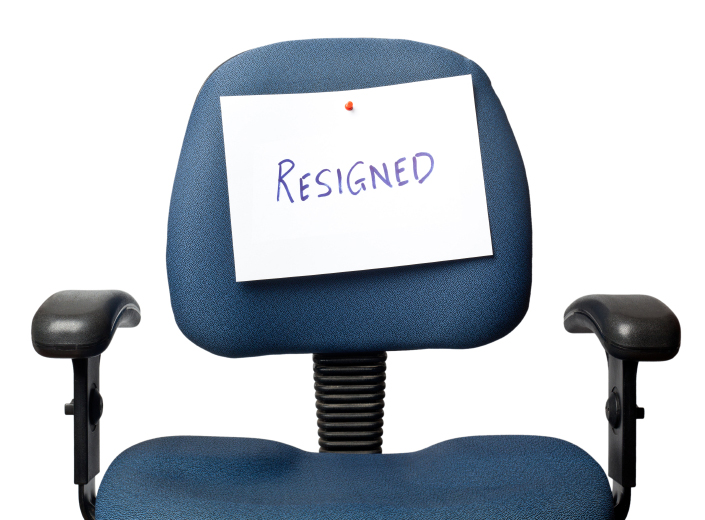Paying the Stress Toll
Walt Johnson had worked in sales for a high-tech company for several years. He was a dedicated worker, but in the past month or so had been making small mistakes. Recently his boss had reprimanded him for losing a big contract when the quote he worked on was rejected in favor of another bidder. That weekend he decided to go in the office and double check some of his pending quotes, perhaps alleviate some of his anxiety that seemed to be growing as fast as the paper piles on his desk. And that’s where they found him the following Monday, passed away in his office chair. The cause of death was a massive heart attack, but the underlying culprit was stress. This sad, but true story demonstrates how stress erodes health and why it is considered to be a primary root cause in many illnesses such as high blood pressure, heart disease, even cancer.
Yet, though many companies at least acknowledge the affects of stress on both physical and mental health, an unspoken view, not only of management, but often employees remains: “If you can’t stand the heat, get out of the kitchen.” The workplace itself, the interactions with bosses and with coworkers, the added responsibilities of family and imperiled economies around the world all add up to one big pressure cooker, and an expensive one at that. Take a look at just a few statistics from the American Psychological Association:
- Workplace stress causes approximately one million U.S. employees to miss work each day. (American Institute of Stress)
- Stress costs American industry more than $300 billion annually in lost hours due to absenteeism, reduced productivity, and worker’s compensation benefits. (The American Institute of Stress)
- More than one of four workers has taken a mental health day off from work to cope with stress. (American Psychological Association 2005)
- More than a third of workers (36 percent) say physical illness and ailments are a cause of stress at work. (American Psychological Association 2005)
- Nearly one-third of workers say that personal life interfering at work is a significant source of stress. (APA 2005)
- In 1999, anxiety-related disorders cost the United States. $42 billion a year in work-related medical losses. (National Institute of Mental Health)
Forming a one-on-one correlation with stress and absenteeism, stress and high turnover, stress and billions in lost productivity or escalating health care costs, just doesn’t occur to many managers and business owners. Besides, even if they do recognize that stress plays a big role at work, what can they do about it? The answer is plenty. This is no longer a phenomenon that can be chalked up to lack of self-control or a national cultural trait. Workplace stress, and its negative repercussions, is a reality for employers and employees around the world.
Stress without Borders
America, long considered the forerunner in the workaholic race, has often run neck to neck with Japan in that dubious competition, but the latter may be surging forward. In Japan, depression, frequently followed by suicide has become such a problem that businesses there are now required to absorb the cascading cost of depressed employees who may take up to two years of mental health leave while retaining their positions. This government policy indicates that the workplace contributes in some way to the illness of depression and, suffice it to say, the cost to Japanese business is significant.
American corporations may not pay in this directly mandated manner for workplace stress, but stress extracts an ample toll as evidenced in a vast number of statistics such as those previously stated. Regardless of the amount of information available on workplace stress, the most consistent finding is that stress is a universal problem with no workplace culture removed from its effects. Isn’t it time to get serious about eliminating or reducing the high cost of stress to business by adopting successful steps for change?
__ I become frustrated because my performance expectations aren’t clear.
__ My boss expects too much of me. I’m not a miracle worker!
__ Our managers don’t give us feedback on performance unless we’ve done something wrong.
__ I can’t remember the last time my managers complimented my performance.
__ I want to contribute to my company’s success, but I usually feel like a cog on a wheel.
__ I don’t feel that I have anyone to turn to when I need help on my job.
__ I really don’t have any decision-making power in terms of my own job.
 If you checked one or more of any of the above statements, you could live in any industrialized country in the world. Lack of job control, limited or no worksite support, lack of clarity about expectations, too many expectations, issues of job status, lack of leadership, no feedback, and a failure to comment on good work: these were the stressful realities stated by workers despite their culture or country. In fact, a cross-cultural study of stress levels and their differences with respect to nationality found that the main source of stress for all employees working in private organizations is the lack of knowledge about their performance evaluation results. Perhaps surprisingly to some, the same study, reported in the Journal of Managerial Psychology, revealed that Saudi employees have the highest levels of stress, with Arabs second, Asians third, while Westerners (Europeans and North Americans) registered the lowest levels of stress. But keep in mind, that lowest in the stress ranking doesn’t necessarily mean low stress. Consider these facts presented by the American Psychological Association in their report “2007 Snapshot of Stress in America”:
If you checked one or more of any of the above statements, you could live in any industrialized country in the world. Lack of job control, limited or no worksite support, lack of clarity about expectations, too many expectations, issues of job status, lack of leadership, no feedback, and a failure to comment on good work: these were the stressful realities stated by workers despite their culture or country. In fact, a cross-cultural study of stress levels and their differences with respect to nationality found that the main source of stress for all employees working in private organizations is the lack of knowledge about their performance evaluation results. Perhaps surprisingly to some, the same study, reported in the Journal of Managerial Psychology, revealed that Saudi employees have the highest levels of stress, with Arabs second, Asians third, while Westerners (Europeans and North Americans) registered the lowest levels of stress. But keep in mind, that lowest in the stress ranking doesn’t necessarily mean low stress. Consider these facts presented by the American Psychological Association in their report “2007 Snapshot of Stress in America”:
- Half of employees (52 percent) report that they have considered or made a decision about their career such as looking for a new job, declining a promotion, or leaving a job, based on workplace stress.
- More than half of employees (55 percent) said they were less productive at work as a result of stress.
- 40 percent of employees report that they do not use all their allotted annual vacation time.
- Employed Americans report that the leading sources of stress at work are low salaries (44 percent); heavy workload (41 percent); lack of opportunities for advancement (40 percent); uncertain job expectations (40 percent); and long hours. (39 percent).
Rapid Turnover and Stress
 One of the most significant problems among newly hired workers for many U.S. industries is high turnover and the related loss in training, productivity, and efficient work networks. Finding the right people to fill jobs consumes much of human resource’s time, and their problems are amplified when new hires do not work out for a variety of reasons. At least 40 percent of all turnover (people leaving a job rather quickly) is said to relate to stress reactions. When frontline workers leave, productivity and customer service is impacted, in addition to existing relationships that build business. Many top leaders and executives change jobs for more opportunity or more money. Many strategies and operational processes are linked to particular leaders who leave the company. When one leader leaves and a new leader enters, stress rises as the company adapts to the new leader’s strategies and as employees worry that they will be replaced with the new leader’s cronies.
One of the most significant problems among newly hired workers for many U.S. industries is high turnover and the related loss in training, productivity, and efficient work networks. Finding the right people to fill jobs consumes much of human resource’s time, and their problems are amplified when new hires do not work out for a variety of reasons. At least 40 percent of all turnover (people leaving a job rather quickly) is said to relate to stress reactions. When frontline workers leave, productivity and customer service is impacted, in addition to existing relationships that build business. Many top leaders and executives change jobs for more opportunity or more money. Many strategies and operational processes are linked to particular leaders who leave the company. When one leader leaves and a new leader enters, stress rises as the company adapts to the new leader’s strategies and as employees worry that they will be replaced with the new leader’s cronies.
Almost 20 years ago, Xerox estimated that it cost the company $1.5 million or more to replace top executives. Today, the cost of replacing an employee averages one and a half times the annual salary of that employee (American Society of Health-System Pharmacists, 2003). However, replacing professional and executive leadership can cost as much as seven times the annual salary of the individual (Thatcher, Stepina and Boyle, 2002). Add to this the intrinsic costs of losing a company’s talented workers who know the technical aspects of the business and take with them years of knowledge and hands-on experience, and the resulting cost to the company becomes almost incalculable. Surprisingly, though faced with such loss, many organizations still don’t see the importance of nurturing their good employees.


